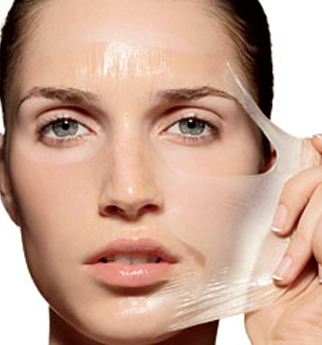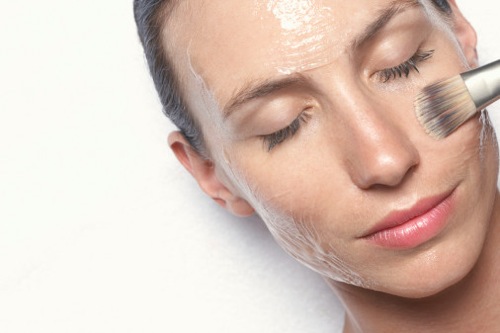 Chemical peels being a non-surgical, relatively inexpensive procedure with a promise of resolving all skin problems is fast gaining popularity among women and young girls alike. From acne to wrinkles, scars to pigmentation, a series of chemical peels performed at a doctor’s office can easily and safely get you rid of all these skin problems.
Chemical peels being a non-surgical, relatively inexpensive procedure with a promise of resolving all skin problems is fast gaining popularity among women and young girls alike. From acne to wrinkles, scars to pigmentation, a series of chemical peels performed at a doctor’s office can easily and safely get you rid of all these skin problems.
However, despite its high popularity and relative safety, there are many doubts, myths, and false expectations surrounding this procedure. So when one of my friends in her early twenties with reasonably fair and presentable skin insisted on getting a chemical peel treatment just to prevent aging and achieve a fairer, more luminous complexion, I felt the need to do a detailed post on chemical peel treatments and empower you with the right knowledge about chemical peels.
So the next time you think about getting a chemical peel done, you know what to expect and what are you in for.
What is a chemical peel treatment?
Chemical peeling as its name suggests is a procedure involving the application of a chemical solution to the surface of the skin in order to achieve careful removal of its dead outer layers and allow the generation of new ones in their place. The amount of skin to be removed depends on the type of acid of used, strength of the product, and the duration it is left on the skin.
Not all chemical peels are the same. Depending upon the skin problem, skin tolerance and condition of the skin, various types of chemical peel treatments are performed at a doctor’s office. Other than the degree of chemical peel ranging from mild, moderate, and strong, the four main types of chemical peels are Alpha Hydroxy Acid peel (AHA), Beta Hydroxy Acid peel (BHA), Tri Chloroacetic acid peel (TCA), and Phenol peel.
Mild Chemical Peels
A mild chemical peel solution usually comprising of a light strength of AHA such as glycolic acid, lactic acid, maltic acid, tratric acid, or start up BHA (salicylic acid) are applied to treat fine lines, areas of dryness, acne, and uneven skin tone.
Mild chemical peels are most popular among young girls and busy women as they do not require any recovery time and deliver almost immediate results.
Moderate Chemical Peels
Most doctors use TCA peel as a medium duty but high performance chemical peel to address deeper-laying skin problems such as wrinkles, fine lines, hyperpigmentation, scars, acne and loose skin. Generally, one week down time is required to fully recover from the effects of procedure. During this time, one is required to stay away from the sun and use a heavy duty sunscreen regularly.
Strong or Deep Chemical Peels
Phenol peels are the strongest of all chemical peel solutions. They penetrate to the deepest or inner most layers of the skin to treat rigid wrinkles, blotches caused by aging and sun exposure, pre-cancerous growths, moles, stubborn scars, and skin damaged by bad acne. Due to downtime and risks involving the procedure, only once in a lifetime if at all should you go for such a treatment.
The peel is strong enough to produce second-degree burns if anything goes wrong. It requires around six months for the skin to heal completely from a deep chemical peel treatment. Sun exposure should be avoided during recovery time.
 Potential side effects of a chemical peel treatment
Potential side effects of a chemical peel treatment
Mild to moderate chemical peels when performed by an experienced cosmetic dermatologist at the doctor’s office are safe. Peeling, crusting, redness, inflammation, and oozing of the skin are all normal signs of the healing process. Potential side effects or unintended damage risk only grows with the depth of the peel and with every subsequent peel you decide to undertake.
The side effects of a chemical treatment if gone bad include:
- Infection
- Scarring
- Post-inflammatory hyperpigmentation
- Blotched complexion
- Unwanted color changes (skin bleaching or darkening)
- Eruption of white heads
- Increased sensitivity to sunlight
Home care and precautions
After a chemical peel procedure, you are required to follow the instructions and home care regimen advised by your doctor. Any negligence or careless in home care or precautions can lead to potential side effects of even a successfully performed treatment. Some precautions to take are not to prick on the peeling skin, keeping your skin moisturized always, wearing high SPF, and avoiding sun exposure.
Are chemical peel treatments painful?
Depending on your tolerance and strength and depth of the peel you feel discomfort ranging from mild stinging to strong burning sensation. However, for deep peels, local anesthetic in combination with mild or full sedation is typically used. Your doctor may prescribe a mild pain reliever to relieve any discomfort after the procedure.
Do chemical peels really bring about dramatic and lasting results?
Chemical peels do produce dramatic results and bring on a radical facial rejuvenation depending upon your concern and depth of peel used but chemical peels never offer a permanent cure for acne, wrinkles or any kind of skin problem you are facing. After care and maintenance are a must if you desire long lasting results from the treatment.
What is the cost of chemical peel treatment in India?
A single session of light to medium strength chemical peel at a doctor’s office may cost around anywhere between INR 1500 to INR 2500, depending upon the strength, depth and place where you get your treatment from.
More about chemical peels and whether you are the right candidate for a chemical peel or not or if you can benefit from a chemical peel treatment, please read the next post.











Recent Comments